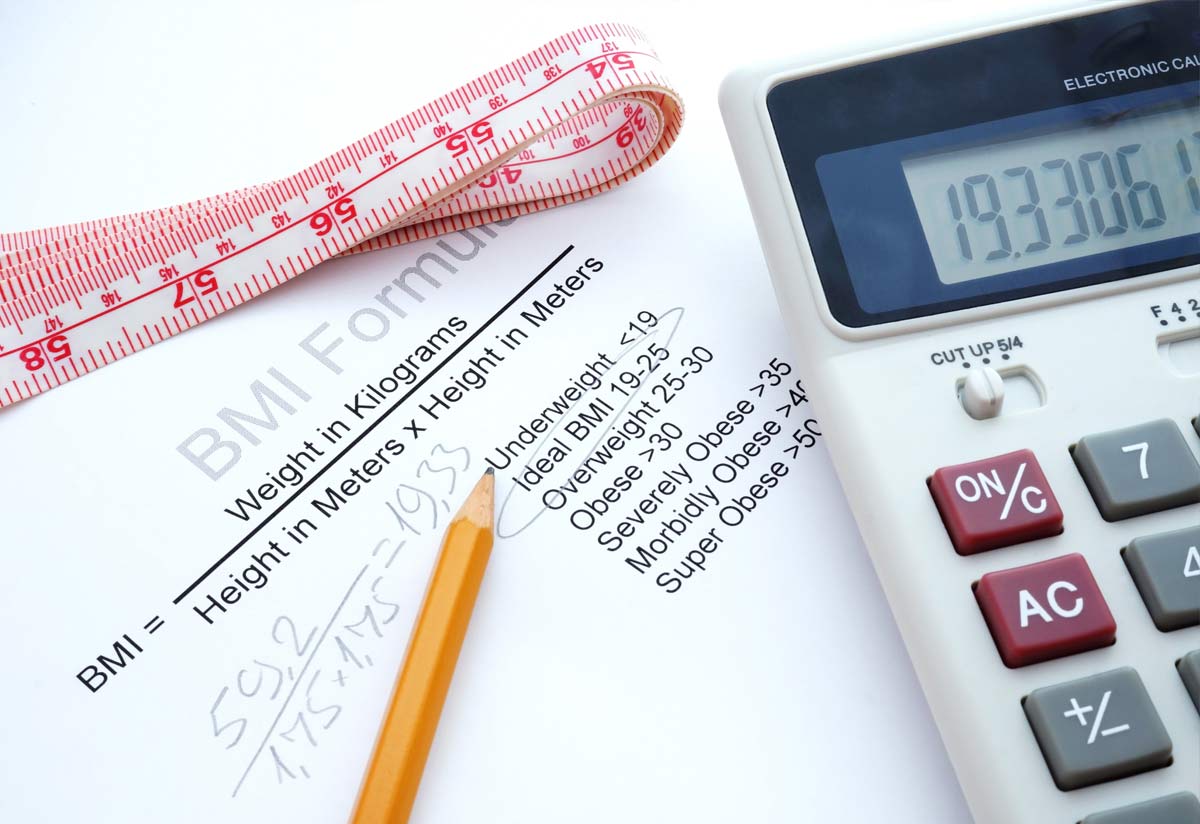

Type II diabetes and its relationship to body mass index needed to be plotted separately due to the extremely high increases of relative risk per point - reaching 50 times increased relative risk at BMI 33-35. Conditions like diabetes can severely reduce your quality of life and the risk of developing it increases sharply with increased body mass index values as show in the next section. Note that the risk of death is not the only negative outcome associated with being underweight or overweight. The calculator outputs a chart with 35-year absolute risk of all-cause death for men and women separately, and plots your BMI score so you can estimate your risk level. This is because the data comes from different studies. Risk of death is versus BMI < 19, risk of type II diabetes is versus BMI < 22-23, high blood pressure vs BMI < 23, arthritis and gallstones are vs. * some health risks are calculated differently than others. The graph shows relationship between being overweight or obese according to BMI measures and relative risk of different diseases. With our calculator you will also get a percentage over/under the normal limit as an output. Sticking to a healthy BMI of between 18.5 and 24.9 (normal weight / healthy weight range) is therefore recommended by health authorities such as the US CDC (Center for Disease Control and Prevention) in order to minimize the risk of health problems. Mean (average) BSA for males by age CategoryĪs you can see, there is a moderate risk in being underweight, but certainly obesity is a primary risk factor for different sorts of causes for mortality. There are different approaches to categorization, but below is the widely accepted WHO categorization. Individuals are classified in several BMI categories (classes) according to their mortality risk. 77 / 3.16 = 24.36, so your BMI is ~24, putting you just in the healthy weight range for your given height. If you also weigh 170 pounds, that is 170 * 0.453 = 77 kg. If you do not, some conversions might be necessary.įor example, if you are 5 feet 10 inches tall, that is 5 x 12 + 10 = 70 inches. Then just multiply your height by itself, and then divide your weight by the result.
#Bmi calculation tool how to#
So, how to calculate BMI knowling the formula above? It is a straightforward task, especially if you already know your height and weight in meters and kg. Weight is referred to as "mass" in medical literature, while height is often called "stature". Of course, in our online BMI calculator you can enter either SI units or imperial metrics for height (feet and inches) as well as weight pounds for weight.

BMI formulaīMI (kg/m 2) = weight (kg) / height 2 (m) See below for a list of BMI categories (classifications). The bigger your calculated BMI is, the greater the risk for cardiovascular complications like hypertension, type II diabetes, some types of cancer, renal disease, degenerative arthritis, gallstones, all of which have links to excessive weight relative to one's heigth. The importance and usefulness of the index and hence any Body Mass Index calculator is in its curvilinear relationship to all-cause mortality. In general, BMI is useful when applied to adults, but may be ill-suited when used for young children or even teenagers where the waist to hip ratio and body fat estimates may be more informative. The modern term "body mass index" (BMI) was coined in a paper published in the July 1972 edition of the Journal of Chronic Diseases by Ancel Keys et al., in which it was argued that what was defined as BMI was ".if not fully satisfactory, at least as good as any other relative weight index as an indicator of relative obesity". The concept of the BMI is due to one Adolphe Quetelet - a Belgian astronomer, mathematician, statistician and sociologist and his work on "social physics" between 1830 to 1850. Our BMI calculator also requires just these two measurements as input and the output is in the units BMI is measured: kg per square meter (kg/m 2), which is often left out in both writing and speech.

The simplicity of the body mass index calculation is one of its advantages: to calculate it one only needs to know his or her weight and height. Body Mass Index (BMI) is an index that attempt to quantify the amount of muscle, fat, and bone mass in an individual, and categorize them as underweight, normal weight, overweight, or obese, based on the index value.


 0 kommentar(er)
0 kommentar(er)
